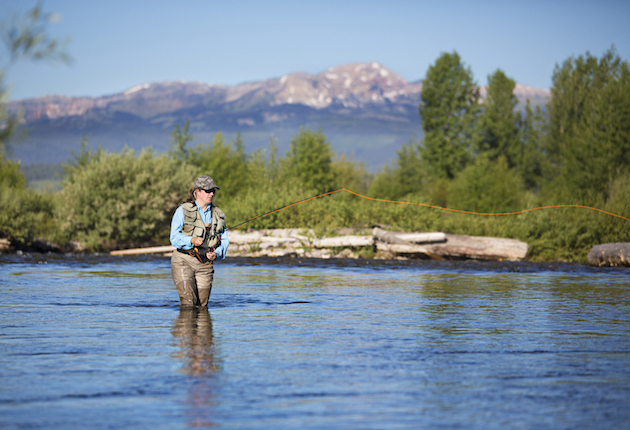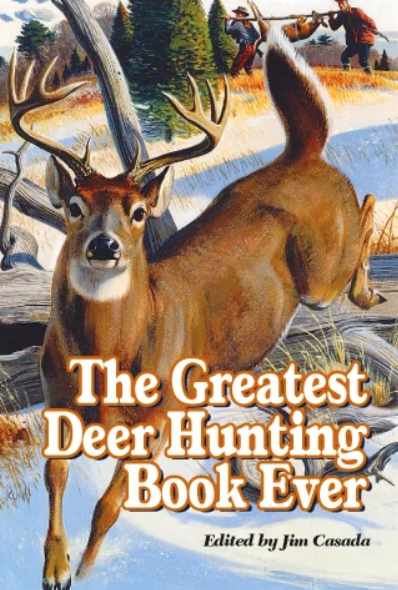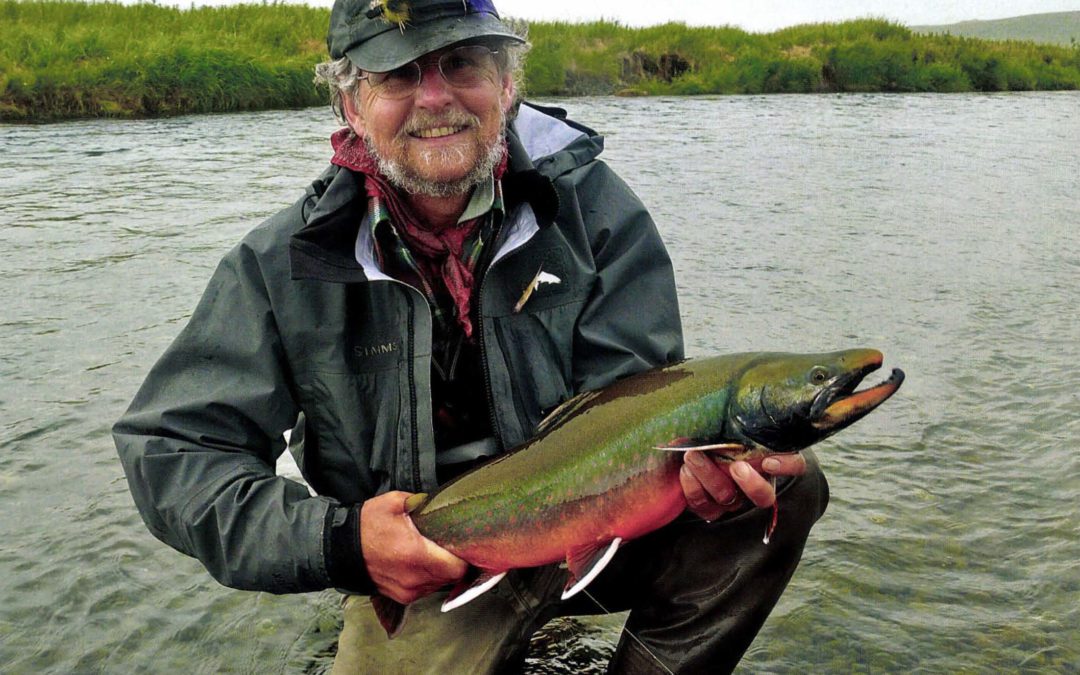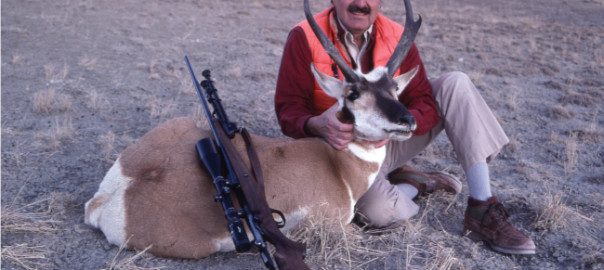Keith McCafferty headlines a list of talented mystery writers whose protagonists are gun- or rod-toting sleuths caught up in murder and mayhem.
Reading has always been an integral and important part of my life. Mine was a blessed boyhood, one where I grew up in a home without a television but within walking distance of the town library. I soon exhausted its small stock of books on hunting and fishing.
At that juncture, stimulated by a gifted seventh-grade teacher who could hold a class spellbound as she told Edgar Allen Poe tales, I turned to mysteries. Works by the likes of Sax Rohmer, John Dickson Carr, Agatha Christie, Ellery Queen, Erie Stanley Gardner and Dorothy Sayers became standard reading fare. These writers, however, rarely touched on outdoor-related topics, and about the best the little library had to offer in that regard were Zane Grey’s western adventure stories. They weren’t mysteries but works like Spirit of the Border were chock-full of lore of the wilds and stirred the soul of a youngster entranced by woodsmanship, hunting and life in the outdoors.
I’m not sure when mysteries focusing on the outdoors or protagonists with special skills in the wilds began to make regular appearances on the popular literary landscape, but today this approach forms a standard aspect of the whodunit scene and offers the sportsman/reader ample gateways to pleasure. Numerous examples come to mind from my own extended excursions in that wonderful world we know as armchair adventure. Momentarily we will turn to a sampling of those with an eye to providing a creel full of suggestions for vacation reading.
First though, let’s focus attention on a relative newcomer to this field who has made a significant splash with three fine mysteries in as many years. Many inveterate readers are aware of Keith McCafferty, thanks to the fact that he served as Survival Editor at Field & Stream and has long been a contributor of fine fly-fishing pieces to national magazines. McCafferty’s writings for periodicals have twice garnered him the prestigious Robert Traver Award for angling literature.
In 2012 McCafferty waded into fly-fishing mysteries with a fine first effort, The Royal Wulff Murders. The book features a rather footloose private detective, Sean Stranahan, whose true passions are fly fishing and art. Set in Bridger, Montana, which is the backside of heaven for anyone who cherishes the long rod and whistling line, the book is true “keeper” as an inaugural offering in the genre.
Obviously realizing he was onto a good thing, McCafferty followed up with two rapid-fire sequels, on a book-a-year basis, to lay the groundwork for a most promising series. Readers who are following the series are likely to wish Sean Stranahan a long, fruitful life with many more exciting adventures in the future.
Like his first novel, the sequels feature fly patterns in their titles: The Grey Ghost and Dead Man’s Fancy. These titles alone are delightful little touches, suggestive of the genre and also well suited to set one to thinking about other patterns that might provide equally catchy titles. In that regard, there is every likelihood that perusal of the lovely color plates of fly patterns that adorn the pages of Ray Bergman’s classic, Trout, would produce intriguing candidates aplenty for Sean Stranahan’s future adventures. For my part, without knowing whether they are listed by Bergman or not, I rather fancy Bottle Imp, Thunderhead, Witch Gold, Irresistible, Rough Water, Nonpareil, Quack Doctor and Golden Doctor as fine possibilities.

My personal thoughts on upcoming titles aside, in the course of just three years McCafferty has made an impressive start in the outdoor mystery genre, though it should be noted that his books will appeal to any whodunit enthusiast, not just sportsmen.
One of the conundrums of reviewing mysteries is just how much should be revealed. My view is basically that less is best. But if you like tales well told as they unfold, marvel at the magic of Montana waters, and appreciate an underpinning of solid sporting knowledge in a work of fiction, I think you’ll find yourself with precisely my perspective after finishing the trio chronicling Stranahan’s sleuthing; namely, wondering when the next book in the series will appear.
Savoring McCafferty’s works predictably turned my thoughts to works by the late Bill Tapply, who died in 2009. The son of a grand sporting scribe from yesteryear, H. G. “Tap” Tapply, Bill grew up in a world filled with bird dogs, fly rods, shotguns and nationally prominent sportsmen such as Burton Spiller. While his literary legacy will rest primarily on his numerous mysteries featuring fly-fishing fanatic Brady Coyne, Tapply also wrote a number of gracefully crafted works of nonfiction. Many of them exude warm reminiscences of his father and other sporting mentors.
Among the more notable of these efforts are Every Day Was Special, Gone Fishin’, Sportsman’s Legacy and Upland Autumn. Once you dig into the Brady Coyne novels, and there are more than 20 of them, chances are you will also want to sample and savor Bill Tapply’s other writing.
In terms of productivity and an appealing protagonist, the British equivalent of Tapply would be Gerald Hammond. His irresistible sleuth, Keith Calder, has a bit of a roving eye and a hint of a poacher’s perspective. Calder, constantly seeking excuses to get away from his gunsmithing and sporting goods shop duties, fancies a bit of rough-shooting or shotgunning of most any sort whenever possible. Invariably such activities lead to trouble. Mix these ingredients with Hammond’s masterful writing hand and intimate knowledge of Calder’s areas of outdoor interest, and the end result is a game bag full of first-rate reads.
McDonald Hastings is another Brit whose work as an expert on shotguns has morphed into some fine mysteries featuring Montague Cork. The name Cork leads to a skip back across the Atlantic to the work of Kent Krueger and his main character, a part-Irish, part-Ojibwa man named Cork O’Connor. Krueger’s mysteries are set in Minnesota and usually are on or near Indian reservations.
The North Country has proved fertile geographic territory for other writers as well. Among them is Steve Hamilton with his Alex McKnight tales placed in Michigan’s Upper Peninsula. The same general area is the setting for some of Nevada Barr’s fine series of Anna Pigeon mysteries. Barr, who has park ranger experience in her personal background, always chooses a national park as the backdrop to her books. Barr’s intimate knowledge of parks and the National Park Service serves her and her readers well.
Perhaps the only contemporary writer in the outdoor mystery field who approaches Barr’s popularity would be C. J. Box. His protagonist is Wyoming wildlife officer Joe Pickett, a man of impeccable honesty and tenacious devotion to duty who manages to get into job-related trouble at every turn.
Pickett’s life is rife with endearing woes and constant struggles: balancing family duties, making do on his meager salary and trying to overcome his uncanny knack for damaging state-issued vehicles. Yet his dogged competence as a woodsman makes him an appealing, believable character.
Finally, I am compelled to mention one other writer who really doesn’t fit the traditional outdoor mystery mold but who offers splendid reading. This is book critic turned bestselling author Stephen Hunter.
Anyone who is a gun nut, enjoys shooting, collects firearms or has been intrigued by the lives of snipers will assuredly enjoy both his Bob Lee Swagger and Earl Swagger series.
In particular, if you are conversant with the grand gun-writers of yesteryear, put Pale Horse Coming on your “must read” list. It will provide you a nice little challenge to link the cast of characters Earl Swagger gathers as a sort of unofficial posse to their real-life counterparts. In other words, you can test your own detective abilities and literary knowledge. I’ll offer a hint: You’ll find characters representing the likes of Elmer Keith, Warren Page and Jack O’Connor in the book.
Space precludes mention of other writers who have produced mysteries in which one aspect or another of hunting, fishing, shooting and the like figures prominently, but the authors mentioned here collectively provide well over a hundred books suitable for whiling away some joyous hours.
For my part, it’s escapism at its finest in that such reading combines personal passions with considerable literary pleasure.
 There’s something about the deer-hunting experience, indefinable yet undeniable, which lends itself to the telling of exciting tales. This book offers abundant examples of the manner in which the quest for whitetails extends beyond the field to the comfort of the fireside. It includes more than 40 sagas which stir the soul, tickle the funny bone, or transport the reader to scenes of grandeur and moments of glory.
There’s something about the deer-hunting experience, indefinable yet undeniable, which lends itself to the telling of exciting tales. This book offers abundant examples of the manner in which the quest for whitetails extends beyond the field to the comfort of the fireside. It includes more than 40 sagas which stir the soul, tickle the funny bone, or transport the reader to scenes of grandeur and moments of glory.
On these pages is a stellar lineup featuring some of the greatest names in American sporting letters. There’s Nobel and Pulitzer prize-winning William Faulkner, the incomparable Robert Ruark in company with his “Old Man,” Archibald Rutledge, perhaps our most prolific teller of whitetail tales, genial Gene Hill, legendary Jack O’Connor, Gordon MacQuarrie and many others.
Altogether, these carefully chosen selections from the finest writings of a panoply of sporting scribes open wide the door to reading wonder. As you read their works you’ll chuckle, feel a catch in your throat or a tear in your eye, and venture vicariously afield with men and women who instinctively know how to take readers to the setting of their story.
This is an anthology to sample and savor, perhaps one story at a time or in an extended session of armchair adventure. That’s a choice for each individual reader, but rest assured that on these 465 pages, there’s an abundance of opportunity to be enlightened and entertained. Buy Now




